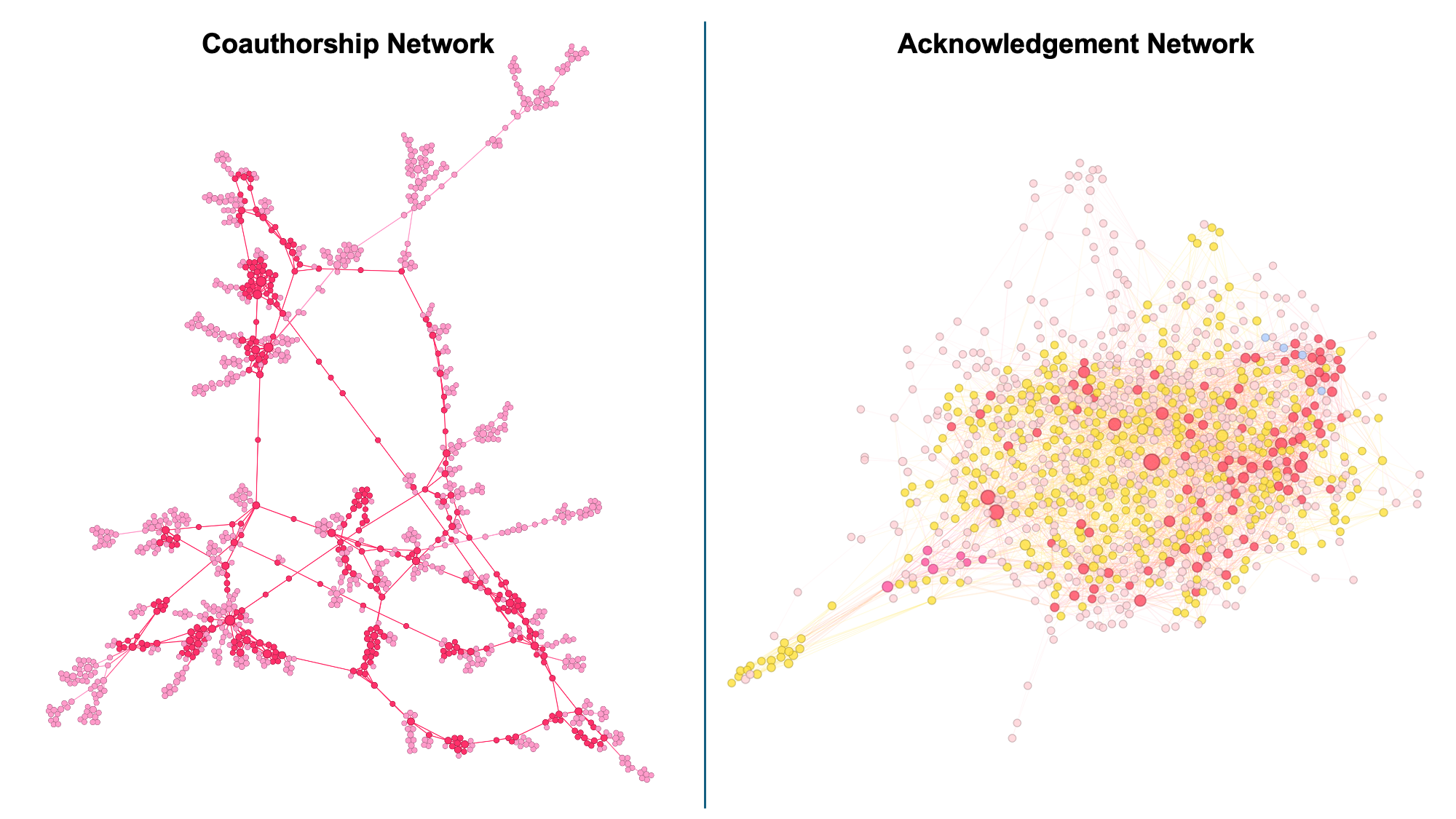Informal Support Networks in Science

Abstract
The size of collaborative teams in the production of scientific knowledge has been on the rise across a broad range of fields over decades. Despite this transition to big science, re-cent studies highlight the persisting relevance of smaller collaborative teams for their po-tential to produce disruptive knowledge. This paper develops an explanation for the dis-ruptiveness of small teams based on the diverse intellectual resources that scientists in small teams obtain from their loose network of informal support in the process of manag-ing resource constraints that small teams face. Using scholarly acknowledgements (i.e., signs of informal support) contained in the articles published in 10 leading sociology journals between 2000 and 2009, I construct a directed network of acknowledgements between scholars and compare its structure against their coauthorship network. The acknowledgement network exhibits a more cohesive structure conducive to facilitating circulating intellectual resources (e.g., ideas, tools, methods) to a larger portion of scholars located in diverse subfields. At the individual level, scholars who are central in the net-work of informal support tend to collaborate in smaller teams and publish more disruptive articles.
Article link: Complex Networks & Their Applications